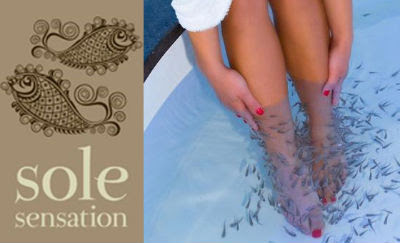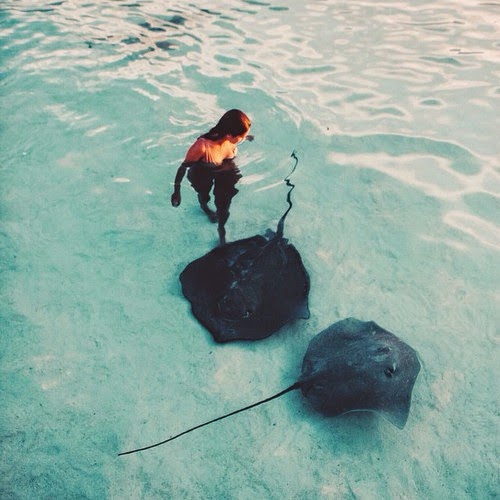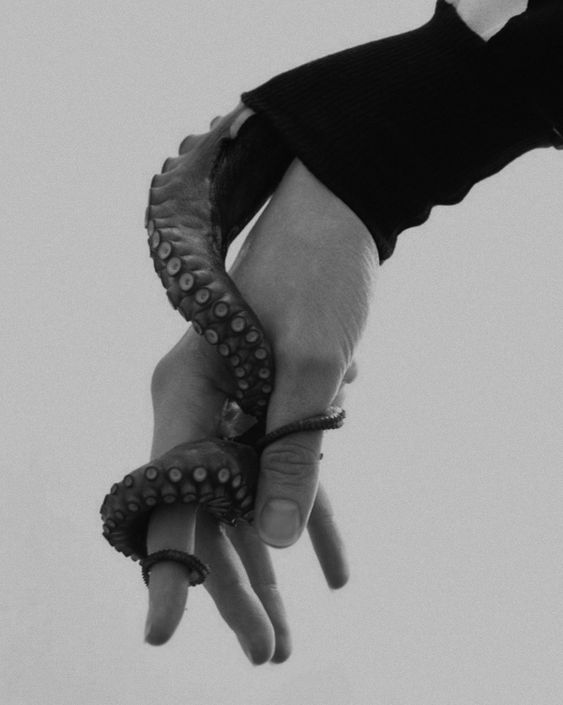 The latest beauty trend in salons is called the fish pedicure. It involves customers dunking their feet in tanks to have their dead skin nibbled away by Turkish miniature toothless carp. The procedure leaves the skin feeling silky and smooth and helps to alleviate serious skin problems. The fish pedicure has been around for a few years but has been gaining more and more popularity since Neptune transited into the watery sign of Pisces.
The latest beauty trend in salons is called the fish pedicure. It involves customers dunking their feet in tanks to have their dead skin nibbled away by Turkish miniature toothless carp. The procedure leaves the skin feeling silky and smooth and helps to alleviate serious skin problems. The fish pedicure has been around for a few years but has been gaining more and more popularity since Neptune transited into the watery sign of Pisces.
In astrology, Pisces governs the feet, and ailments of the feet are common in individuals with Pisces nativities. All twelve zodiacal signs are assigned a different part of the body, starting at the top of the head with Aries and finishing at the soles of the feet with Pisces. Pisceans can be described as having one foot in this world and one foot out of this world.
The zodiac constellation of Pisces, characterized by its emblematic two fish swimming in opposing directions, often linked by a cord or ribbon, serves as a profound symbol within astrology. This imagery not only captures the dual nature of life, representing the constant interplay and balance between various forces and directions, but it also holds deeper connections to the element of water—a fundamental, life-sustaining, and transformative force within both the physical and metaphysical realms.
Water, in its essence, carries the attribute of healing. It is central to numerous practices and beliefs, transcending its simple physical necessity for sustaining life. Bathing and immersing oneself in water are acts of rejuvenation, cherished across cultures and ages. These practices are not just about physical cleanliness but are often seen as rituals for spiritual purification and renewal.
It is widely accepted in scientific communities that life on Earth originated in the primordial oceans, evolving from simple organisms to the complex biodiversity we observe today. This idea of life emerging from the sea resonates with various reincarnation theories and philosophical ideas that envision existence as a cyclic journey. Just as water cycles from rain to river to sea, and back through evaporation and rainfall, life, too, is seen as undergoing perpetual cycles of birth, death, and rebirth. The spiral, a motif often associated with cycles and growth, mirrors the dynamic and ever-changing nature of water—always moving, evaporating, condensing, but never remaining static.
Neptune, the ruling planet of Pisces, further strengthens the bond between Pisces and the element of water. In mythology, Neptune is the god of the sea, ruling over the vast, mysterious depths of the oceans, symbolizing the boundless, often hidden dimensions of the emotional and spiritual realms. Neptune’s transit into Pisces, an event that occurs approximately every 165 years and lasts for about 14 years, is seen as a period of heightened sensitivity, intuition, and connection to the spiritual aspects of life. It emphasizes healing, not just on a personal level, but also on a global scale, encouraging the exploration of water’s transforming properties and its life-sustaining role in life on Earth.
From the therapeutic uses of seawater and marine minerals in thalassotherapy to the exploration of fish-derived substances for their health benefits, Neptune’s influence in Pisces encourages a reconnection with the sea as a source of physical and spiritual nourishment. It heralds a time for embracing the fluid, transformative qualities of water, encouraging individuals to flow with life’s currents and find healing and renewal in this most essential and mystical element.












